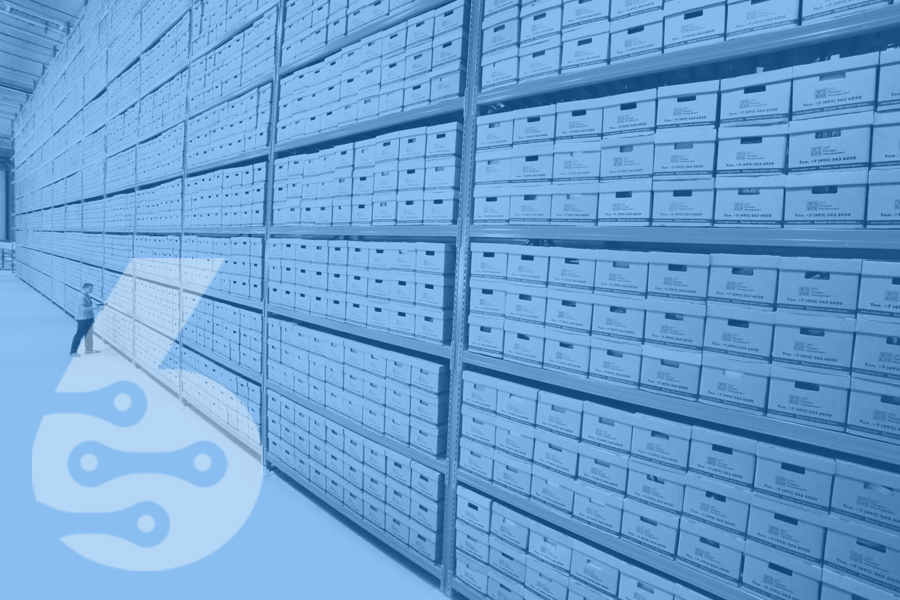- Data Management
- 20.08.2025
Document Management and Document Templating in SIX ERP
Driving Paperless Consistency Across the Enterprise
Dr. Andreas Maier
20.08.2025
“ Document management isn’t just about storing files — it’s about creating consistency, ensuring compliance, and turning information into a competitive advantage. “
In today’s hyper-connected business landscape, documents remain the lifeblood of operations. Contracts, invoices, purchase orders, delivery notes, and HR forms are the carriers of critical information that moves an organization forward. Yet, in many companies, document handling remains fragmented, paper-heavy, and prone to errors.
For businesses aiming to operate with agility and transparency, document management is no longer just an administrative necessity—it is a strategic advantage. Standardizing, securing, and automating the lifecycle of documents not only improves efficiency but also ensures consistency, compliance, and a smooth customer experience.
This is where SIX ERP steps in. As an integrated enterprise resource planning solution, SIX ERP redefines how organizations create, store, manage, and utilize documents. Through powerful document management and document templating capabilities, SIX ERP helps companies move toward the vision of a truly paperless office, where every document is consistent, auditable, and seamlessly integrated into workflows.
The Role of Document Management in ERP
Document management within an ERP system goes beyond simple file storage. It is about ensuring that every piece of documentation is accurate, accessible, and connected to the right business processes.
Without proper document handling, organizations face:
- Duplication and errors – multiple versions of the same contract or purchase order circulating across departments.
- Operational inefficiency – employees wasting hours searching for the right document.
- Compliance risks – no reliable audit trail for approvals, signatures, or document revisions.
- Inconsistent branding – customers receiving quotes, invoices, or delivery notes that vary in format or design.
An ERP solution like SIX ERP addresses these challenges by embedding document management into its very core. Sales, purchasing, production, HR, and finance teams all rely on the same unified repository—ensuring consistency, real-time availability, and a secure audit history.
Document Templating – Why It Matters
While document management ensures control and accessibility, document templating is the key to efficiency and consistency.
What is document templating?
It is the ability to predefine the layout, structure, and content placeholders of common business documents. Instead of recreating each invoice, purchase order, or delivery note from scratch, employees can apply a template that automatically merges with transaction data stored in the ERP system.
The benefits are significant:
- Consistency across communications – every invoice, contract, or report reflects the same branding and structure.
- Reduced manual effort – templates eliminate repetitive typing and formatting.
- Lower risk of errors – critical details such as customer information, pricing, or terms are automatically pulled from the database.
- Scalability – as a company grows, templating ensures processes remain streamlined and professional.
Consider a multinational manufacturing firm. Without templating, regional offices may each design their own purchase orders, leading to discrepancies in formatting, inconsistent terms, and confusion for suppliers. With SIX ERP’s templating system, all purchase orders share a unified structure, while still allowing local adjustments for language or legal requirements.
Beyond Numbers, Beyond Data – SIX ERP is Business Intelligence Evolved.
Document Management in SIX ERP
SIX ERP brings document management to life with features that allow organizations to control the full lifecycle of every document:
- Centralized Repository – All documents are stored in a secure, structured system. No more scattered paper files or forgotten email attachments.
- Version Control – Track revisions and updates, ensuring that employees always work with the latest version.
- Audit Trails – Every edit, approval, and digital signature is logged, creating a transparent history for compliance and governance.
- Permissions & Access Control – Sensitive documents (e.g., financial reports, HR contracts) are only accessible to authorized roles.
- Search & Retrieval – Intelligent search features make finding documents instant, eliminating wasted hours.
- Workflow Integration – Documents are not static files—they are tied into ERP workflows. For example, a purchase order generated in procurement can be automatically routed to approvals and then linked to an invoice in finance.
This integration creates a living, breathing system where documents actively drive business processes rather than sitting idly in filing cabinets.
Document Templating in SIX ERP
Where document management provides control, templating delivers productivity and professionalism. SIX ERP’s templating engine makes it easy to define, customize, and maintain standardized documents for every department:
- Template Creation – Using an intuitive editor (including WYSIWYG/TinyMCE integration), administrators can create templates with company branding, headers, footers, and placeholders.
- Placeholders & Merge Tags – Templates dynamically pull customer names, product details, prices, tax information, or project data directly from ERP records.
- Entity Support – SIX ERP templates can be applied to invoices, estimates, purchase orders, delivery notes, contracts, and even HR documents.
- Real-Time Preview – Users can instantly preview the final document before generating it, ensuring accuracy.
- Multi-Language & Multi-Format Support – Companies operating across regions can maintain localized templates, while final documents can be exported as PDFs, sent by email, or accessed digitally.
For example:
- A sales manager generates a quote using the “Sales Proposal” template. The system automatically fills in the client’s details, product prices, and company terms, producing a professional PDF within seconds.
- In procurement, a purchasing agent uses a “Supplier PO” template. The system pulls approved items, quantities, and prices, reducing errors and standardizing communication with suppliers.
This templating capability ensures that every external-facing document reflects the same professional identity, reinforcing brand trust and reliability.
Driving the Paperless Office
One of the greatest transformations enabled by SIX ERP’s document management is the move toward a paperless office.
Paper-based processes not only waste resources but also slow down decision-making and create bottlenecks. Lost documents, manual signatures, and storage costs are all relics of an outdated model.
With SIX ERP:
- Documents are created, stored, and routed digitally.
- Approvals can be completed electronically with full audit trails.
- Retrieval is instant—no searching through filing cabinets.
- Environmental impact is reduced by cutting paper usage.
A paperless environment isn’t just about sustainability—it is about agility. In a digital-first organization, teams can respond faster to customer requests, collaborate across locations, and maintain compliance without drowning in paperwork.
Compliance, Consistency, and Audit Trails
For industries such as manufacturing, pharmaceuticals, and finance, compliance is non-negotiable. Regulatory bodies demand clear documentation of processes, approvals, and revisions.
SIX ERP’s document management ensures:
- Auditability – Every action on a document is logged. Who edited it, when it was approved, and what version was sent are all tracked.
- Consistency – Templates ensure that documents always follow the required structure and content.
- Security – Role-based access control restricts visibility to authorized personnel.
- Legal Reliability – Digitally signed documents carry the same weight as physical signatures while being easier to verify.
This level of control provides peace of mind to business leaders, knowing that their documentation practices not only drive efficiency but also hold up under regulatory scrutiny.
Benefits for Businesses
Adopting SIX ERP’s document management and templating solutions translates into tangible business benefits:
- Time Savings – Employees spend less time creating, searching, and correcting documents.
- Operational Efficiency – Documents move seamlessly through workflows, speeding up approvals and reducing bottlenecks.
- Customer Trust – Consistent, professional documents build credibility with clients and partners.
- Cost Reduction – Reduced paper usage, lower storage costs, and fewer manual errors directly save money.
- Scalability – From SMEs to global enterprises, standardized document processes scale without breaking down.
Practical Use Cases
- Sales & CRM – Auto-generated proposals, quotes, and invoices ensure that customer communication is timely, accurate, and branded.
- Procurement – Purchase orders and supplier contracts follow standardized terms, reducing disputes and confusion.
- Manufacturing – Work orders and quality control checklists ensure operational consistency.
- Finance – Consistent invoices and audit-ready documentation streamline accounting and reporting.
- HR – Employment contracts, performance evaluations, and internal communications are standardized and secure.
The Future of Document Management in ERP
The future points toward even smarter, more automated document processes:
- AI-assisted generation – intelligent suggestions for contract clauses or pricing terms.
- Digital signatures & eID integration – enabling secure, cross-border approvals.
- Smart Workflows – documents triggering automated actions across ERP modules.
- Deeper Analytics – insights into document lifecycle, approval bottlenecks, and compliance risks.
SIX ERP is positioned at the forefront of this evolution—continuously adapting to ensure businesses remain efficient, compliant, and customer-focused.
Conclusion
Documents are more than just paperwork—they are the language of business. Inconsistent, manual, and paper-heavy practices slow organizations down, while standardized, digital-first approaches drive efficiency, compliance, and trust.
With its integrated document management and document templating features, SIX ERP empowers businesses to embrace the vision of a paperless, consistent, and audit-ready future. From quotes to contracts, from purchase orders to delivery notes, every document reflects professionalism, compliance, and operational excellence.
In an era where speed and transparency define competitiveness, SIX ERP ensures your documents aren’t just managed—they become a catalyst for growth.
About the author
Andreas Maier is a results-driven CEO with nearly 30 years of experience in ERP, digital transformation, and IT consulting. He has held leadership positions in Fortune 100 companies such as rentalcars.com (PCLN) and Intrasoft International, a leading EU-based R&D software vendor. With a Ph.D. in Neural Networks from the University of Cologne, Andreas combines deep technical expertise with a strategic approach to business process optimization.
As the founder and co-founder of multiple successful startups, including XXL Cloud Inc., eShopLeasing Ltd, and WDS Consulting SA, his expertise lies in ERP consulting, IT strategy, and process automation. His work is focused on helping businesses implement scalable ERP solutions, streamline operations, and drive digital transformation.
Related articles

Data Management. What is it?
Data management is organizing and maintaining data to make it easy to find and use. Good data management practices can help companies improve efficiency, make better decisions, and protect against...
Top 10 ERP Features Warehouses and Distributors Need
If you are in the business of warehousing and distributing goods, then you know that having a good ERP system is critical to your success. But with so many different...



